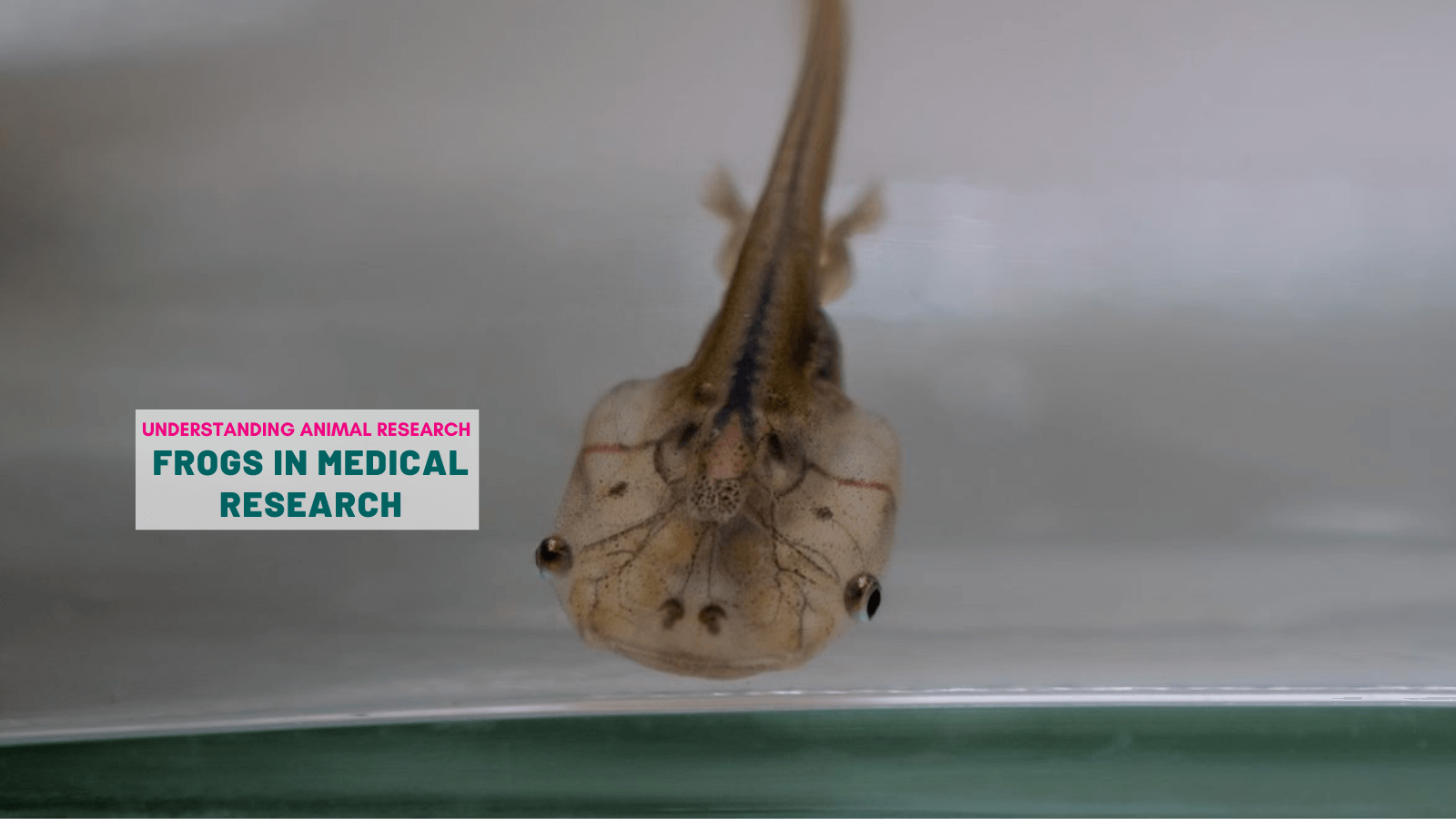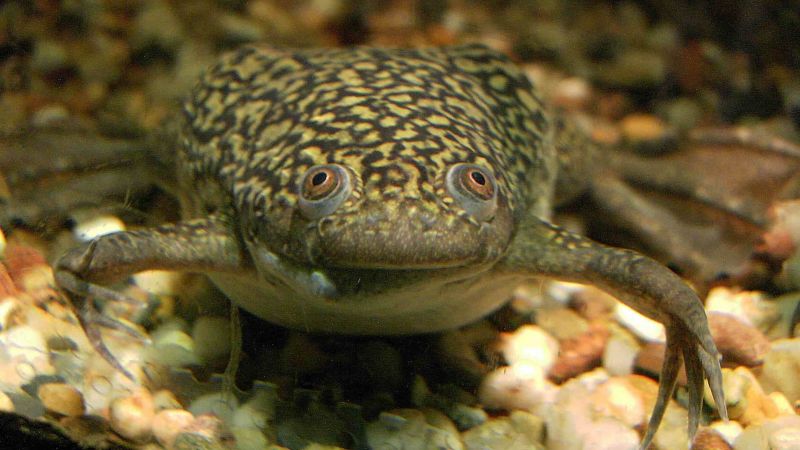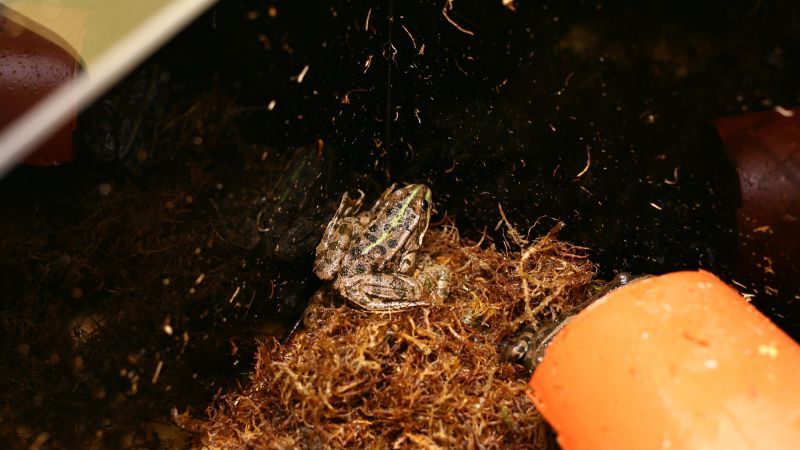Although somewhat overshadowed today by mice, fruit flies and fish in research, frogs have and still continue to play a key role in many scientific advances. Frogs notably played a starring role in a number of Nobel-prize winning experiments and shaped the field of stem cell research and cloning. Some may even argue that we’ve learnt more about the principles of vertebrate development from amphibians than any other vertebrate class.
Frogs in research
As early as the 18th century, scientists were describing the biology and natural history of frogs. With the expansion of knowledge regarding amphibian reproduction and development, scientists began experimental manipulation of embryos.
By the early 20th century, investigators discovered that an injection of urine from pregnant women induced ovulation in the African clawed frogs making Xenopus an integral component of early pregnancy testing and an ideal choice for developmental studies. Xenopus emerged as a premier animal model for biological research, and today, Xenopus and other amphibians are widely utilized in research.
There are many reasons for this. Frogs adapt particularly well to the laboratory setting. The females lay lots of eggs, the embryos develop outside the body, the embryos are large and easy to dissect, you can culture them in a simple salt solution, and they don’t increase in size as they develop.
Professor of Developmental Genetics at the University of Portsmouth, and head of the European Xenopus Resource Centre funded by the Wellcome Trust and BBSRC, Matt Guille has worked with Xenopus throughout his career and is a strong advocate for them.
“Xenopus lends itself to an enormously broad range of experimental types. It's very difficult to think of an animal-based experiment that can't be done using Xenopus.”
“Xenopus have contributed to a wide range of research, from very basic biology to understanding the fundamental processes of cells, genes, and whole organisms, modelling diseases and testing drugs. They shed light on processes that are distant from having an application tomorrow, right through to procedures that are being used to advise clinicians today.”
Frog eggs and embryos
Guille explains that in fact, working directly on adult frogs is extremely unusual for a biomedical scientist. Most of their work uses the eggs or the tadpoles. On occasion, ecologists will use frogs to understand frog diseases or their role in ecosystems. Guille told UAR,
“The adult frogs are mostly kept in the lab for reproductive purposes. It's extremely unusual for us to have to take an animal used in a medical experiment through to adulthood, unless we need to breed it to make a line of animals. That in itself is a refinement of animal research.”
Xenopus eggs and embryos are outstanding tools in biomedical research. The embryos can tolerate extensive manipulation (e.g. making tissue explants like the prototypic organoid, the animal cap or tissue transplantations). It is easy to inject a range of materials such as nucleic acids, proteins, and even whole nuclei into whole embryos or into specific cells. The cell fate of each early embryonic cell is well known, allowing targeted gene knock-out, knockdown and overexpression studies.
Frog eggs turned out to be the foundation of many breakthrough scientific discoveries. In the 1980s, they were used to identify the first important signalling event in the developing embryo. The first vertebrate gene was also isolated in the frog. Frog eggs are particularly useful in translating mRNAs into proteins.
The power of frog genetics
Until fairly recently frogs weren’t used in genetic experiments or modified to model human diseases, like is done in mice, for a very simple reason. The species of frog most widely used in research, Xenopus laevis, has four sets of every gene, instead of two as in humans. This made genetic manipulations and observing the consequences much more tricky than necessary.
However, around the turn of the century researchers adopted a frog related to Xenopus laevis but with with only two sets of genes. This smaller and faster-breeding Xenopus tropicalis turned out to be perfect for genetic studies, and it could be modified as easily as any other animal in research.
“In fact, Xenopus tropicalis has very few repeated genes which means it is particularly good for doing gene knockout experiments. When you knockout a gene, it almost always has an effect on the animal, which isn’t always true in other models. This frog filled a much-needed gap. Using frogs for genetic experiments has really evolved in the last few years”, explains Guille.
From mice to frogs
With recent technological advances in gene editing, like CRISPR-Cas9, knocking out genes in frog embryos has become extremely efficient, easy and fast. Some experiments can take as little as two and a half days with at least 92% efficiency rates in changing the genetic sequence. The big size of the frog egg means that a lot of the active CRISPR-Cas9 machinery can be injected.
“That's really changed things because it means that these animals are starting to be used very heavily in genetic disease research. This is especially true since the frog genome and the human genome are really quite similar and it's much more straightforward, quicker and costs a lot less to make a knockout frog than a knockout mouse,” explains Guille. “A lot of researchers have hence started to make rare disease models in frogs.”
“I can’t say if work in mice will be moving to frogs in the near future, but it is a conversation we are starting to have now. We're starting to think of pipelines for analysing rare genetic diseases that might have a frog component. What hasn't happened yet is to test how effective that combined frog to mouse pipeline might be and what the relationship between the mouse work and the frog work would be. But I think these are certainly potentially exciting ways forward and I certainly wouldn't write fish or indeed invertebrate model organisms out of that equation either.”
Frog welfare
The Xenopus frogs that are used in research prefer an aquatic lifestyle. Most research laboratories nowadays will keep them in tanks of up to 40 litres depending on the species and the water is kept clean with robust filtration systems.
“Our frogs are carefully cared for. We make sure they have enhanced welfare conditions. The tanks are enriched depending on the preferences of the frogs. Xenopus laevis like to hide so we offer them boxes and tubes to go into. Some of them never go into them, but others really like it. For Xenopus tropicalis we can add to that a floating plastic lily leaf that they like to sit on,” describes Guille.
The frogs are studied in order to tailor their husbandry and use to their behavioural needs.
“One of the things we are starting to learn about is that hierarchies of frogs in tanks are important, so we avoid moving them between groups as much as possible. Hopefully the more we understand the frogs, the better we will be able to adapt their living conditions.”
It is illegal to get the frogs from the wild, so they are bred in laboratories. Freezing frog eggs and sperm, centralizing frog reproduction and sharing embryos between labs has notably enabled fewer animals to be used for breeding purposes.
“Some labs have even stopped keeping their own frogs and just order the embryos that they need to study. I'm proud of the team that's put that in place, it has meant a lot in terms of the 3Rs and frog welfare.”
Last edited: 20 March 2023 13:27
Last edited: 25 April 2023 14:25




